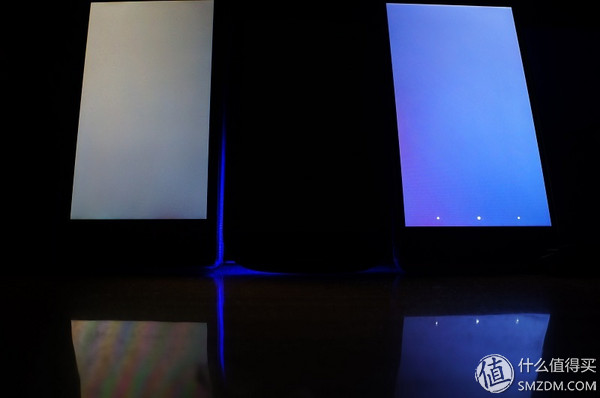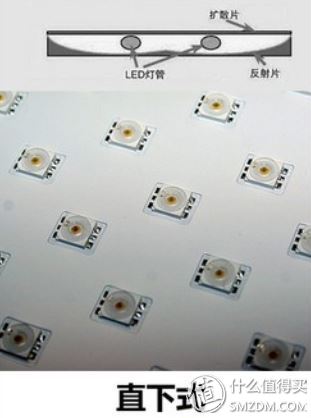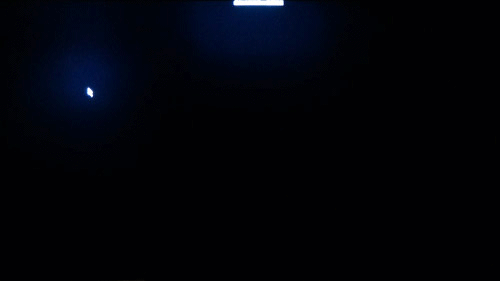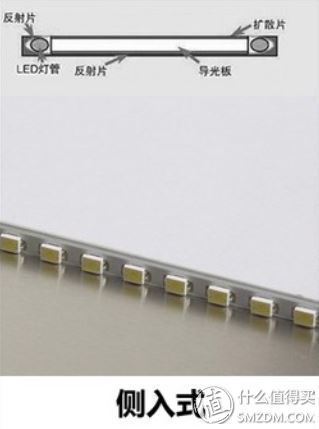In recent days, 4K has become the hottest technology in the television field. The so-called 4K is a TV with a resolution of 3840×2160, which fundamentally improves the clarity of television. However, the film source problem has always been criticized for everyone, so in a sense, the significance of buying a 4K TV is not significant. Then the question is, since it does not look at 4K, what else can be used to simply compare the level of TV performance? This is the backlight control function that will be described next.

Huh? It's not a good idea to write LCD TVs. How do you put your phone out? Because the owner of a silk, it is not together an OLED and a LCD, can only use the mobile phone to charge.
We can see here there are actually three mobile phones. The two left and right phones are the Dafa Z2 and the Coarse Grains 1S that use LCD screens, and the middle one is the Samsung S3 that uses OLED screens. All three phones use black pictures. From the above figure, it can be clearly seen that the LCD screen is not black under the full black screen. Under the same screen, the OLED is totally black and is like an invisible one. The Black Bit is the vocabulary of whether the screen is good or bad on the expression of black. From the above figure, we can say that OLED bursts out of liquid crystal in the black position.
As for why OLED can explode the LCD on the black level, it's actually very simple. OLED itself is a kind of self-luminous material. How much brightness do it all depends on its own, but the LCD is different, it can only adjust the grayscale, the brightness is Backlights on the back or sides are in the balance, so as long as the backlight is on, even if the grayscale of the LCD reaches its highest level, it will not be able to block all light from passing through, resulting in a poor black level.
The major LCD TV manufacturers think that since there is no way to control light leakage, I can always control the brightness of the light, so there is a light control technology. To put it plainly is to detect how dark the picture is, and then automatically control the brightness of the backlight according to the degree of black.
For now, there are three kinds of backlight controls, which are introduced one by one.
Frame light control is based on the entire screen as a unit of backlight control, is the most simple way of backlight control, is currently used in high-end models. For the frame light control, it is not important whether the backlight is directly below or sideways. Anyway, all the lamps can adjust the brightness together.
PS: TV with no light control function is the same as frame light control, and it is not divided into direct type backlight and side-entry type backlight because it has relatively limited impact on picture quality compared with partitioned light control television.
The above video is from the Sony direct-type backlight TV 40W600B, can be seen from the video when the mouse moves out of the picture, the entire screen is dark, this means that the backlight is turned off or the brightness is minimized, so that the screen completely Black. However, such deficiencies are obvious. When the screen is partially black, this kind of backlight control method is useless. The most prominent thing is when watching movies with subtitles.
From the current situation of Sony, frame light control is used in the middle of the W600B to W850B aircraft, the other manufacturers have not given relevant instructions, but even if it does not matter, after all, this product is very limited to enhance the quality.
Direct type area light control As we all know, LCD TV backlight is divided into two types, direct type and side-entry type, so the regional light control is also different because of the type of backlight. Let us first look at the direct type. As can be seen from the figure below, the direct type is to mount the LED on a flat panel with a similar size to the TV, and then put the LCD in front of it to illuminate the entire TV. (There are N layers between backlight and LCD)

The following figure is from the Sony HX950 for 12 years.

Direct-down area backlight Because the lamp is placed on the back of the LCD panel (as shown in the figure below), it is possible to achieve brightness control of the lamp in one area as shown in the figure above, while other areas will not be affected. This is the best way to control light in LCD TVs at present. The only drawback is that the direct backlight will increase the thickness of the TV.
This technology is currently only used for top-level LCD TVs such as the Sony X9500B. From the point of view of known intelligence, Samsung and LG have not used this technology. After all, LG's OLEDs are full-pixel light control, naturally disregarding the partition control light, and Samsung itself is a side-by-side advocacy, naturally not. What's going on here? In addition, China-made Hisense's ULED is also a direct type of regional light control , in the era of domestically produced all-round bragging, Hisense dare to use heavy straight down, but also quite fight.
Side-by-side type, as the name suggests, is to put the lamp on two sides of the four sides of the LCD panel and introduce light into the panel from the side. The biggest advantage of this technology is that it greatly reduces the TV's thickness (ben). Therefore, it can also be reflected in this point that thin TVs are all sideways.

The video in this machine is Sony's 13 year high-end machine 55W900A, can be seen from the video, compared to the previous generation of HX950, due to replaced by the side-entry backlight, resulting in the mouse in the middle of the screen, the two sides are not The bright spot is also lit up, greatly affecting the visual effects.
This light control mode is currently the mainstream configuration of high-end models. Sony uses this light control method from W950B to X9000B. Samsung has this technology application from above the H6XXX series. LG disclosed not much, but it is certain that it has this technology at the level above GB7800. Countrywide Millet TV2 and LeTV also use this technology. However, the specific effect is unknown. If you have friends who are interested in these two machines, you can test it in a completely dark environment.
When the backlight control is in the same form, it depends on how much the light control area is divided. The so-called light control area number is that the backlight is divided into N blocks. The larger N is, the finer the control of the screen is. The Toshiba X series made 512 partitions, which is arguably the highest level of control of LCD TVs. What is the meaning of the specific people can see the following diagram of the W900A partition control light

The red circle on both sides of the rectangular frame is the LED light. The blue line in the middle is the independent light control area. Take the above picture as an example. The backlight is a group of two LED lights and is divided into 16 light controls. In the area, each area can independently control the backlight brightness. In order to ensure that when the upper right corner of the screen appears bright, the black in the lower left corner can still ensure that black is black enough, the actual effect can be seen in the figure below,

Although this picture is not large, I believe that we can obviously find that the right TV black is obviously stronger than the left TV. It will not be like the left TV. The whole picture is white, but the black place is black. , The bright place, greatly increased the contrast of the screen, restore the original look of the screen, which is the actual effect of the regional control light. The so-called good or bad picture quality is nothing more than to restore the truest or most eye-catching colors, isn't it?
Currently, major manufacturers rarely disclose how many partitions are used, so the specific situation can only be measured by everyone. Currently only known Xiaomi's 8 divisions and LeTV's 16 divisions are sold. But summing up or saying good goods is not cheap, I believe we can feel that the picture quality is not as good as a generation, but the price is rather cheaper year after year, 12 years of HX950 compared with 13 years of W950A, from 192 district The straight down type has shrunk dramatically into the 16-zone side entry type. The 13-year W950A is shrinking from 240HZ panels to 120Hz compared to the 14-year W950B. On the surface, it seems that these three machines are cheaper each year, but wool is still on the sheep.
In the end, we will use a popular propaganda video of Hisense ULED to finish it. This video shows the true features of backlight control.
The last thing to add is that the essence of ULED is direct-directory partition control. Even if it is Toshiba X1000C, it is only 512 partitions. OLED is a self-emissive material, which means that 4K resolution OLED is equivalent to nearly 8.3 million. The same is true for the partitions and plasmas. The 1080P plasma is equivalent to more than 2 million partitions. This difference is not based on partitioned light control. Therefore, ULED surpasses OLEDs. This is really blowing.